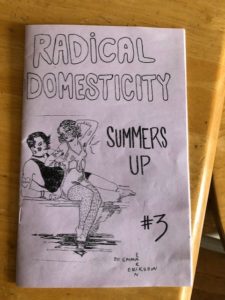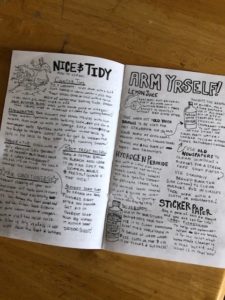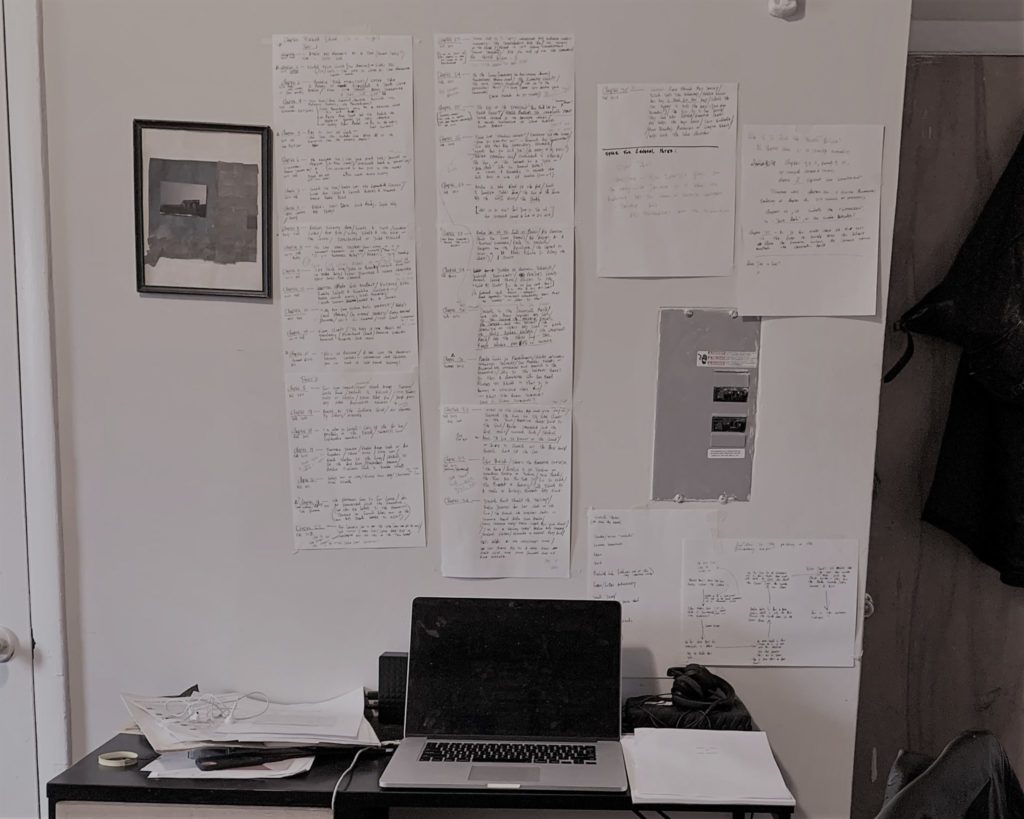In her thesis entitled “The Music in His Words: The Art of Sound and Folk in Louis Armstrong’s Manuscript for Satchmo: My Life In New Orleans, “The Armstrong Story””, Adriana Filstrup combines a number of textual genres and photography as a means to contrast Armstrong’s autobiographical and typewritten manuscript with the published book version Satchmo: My Life In New Orleans. Filstrup includes textual genres of academic prose, song lyrics, and memoir excerpts. Photographs depict Armstrong sitting at a table typing on a manual typewriter and a page of the typed manuscript. Following Bolter and Grusin’s formulations (Remediation : understanding new media, 1999), Filstrup’s thesis uses the medium of academic narrative as a contextual container within which to represent and appreciate the medium of jazz music. Music is remediated through the textual and visual media as a meta layer of meaning. The academic container offers an intellectual context for the appreciation of the sensory experience of playing and listening to music as well as the experience of typing out memories onto the permanent typewritten manuscript (or more correctly “typescript”). In this way, Filstrup uses text and photography to successfully claim that the published book form, as a form of hypermedia when compared to the manuscript form, loses the immediacy of Armstrong’s voice through the editing choices of the publisher. Armstrong’s manuscript serves as a more immediate remediation of his music.
Filstrup includes excerpt’s of Armstrong’s highly personalized musical text and language such as “Ump Ump Ump”, which corresponds, in a possibly mediated translation from visual poetics to aural poetics, to Drucker’s spectrum of texts between the personal expression of visual poetics including gesture, letterform, glyphs to mechanical formats imposed by the social system (Figuring the word : essays on books, writing, and visual poetics, 1998). In this way, we might ask if Armstrong was also playing the typewriter and if Filstrup is similarly playing the academic thesis, thus suggesting the notion that all media represent the repertoire of instruments mediating levels of both immediacy and hypermedia.
Finally, how would Filstrup’s narrative and argument have faired by using a comic strip format? While the combination visuals and text would indeed open up spaces for new ways of thinking and experiencing Armstrong’s music, as Sousanis argues (“Unflattening: Revolutionizing thought in Comics”, 2016), the question remains whether the reader could be better served by fully owning the generative imagination of text rather than the suggestive guiding of the comic strip.





